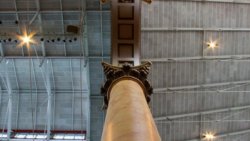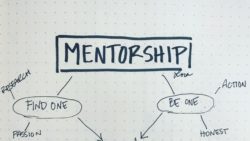Sustainability: What’s it worth to you?
As I mentioned in last week’s post, my background in sustainable design does not prevent me from being a nature-killing Hulk sometimes. Every designer has had a moment where the sustainable implications of a choice have been spaced as they sought to turn the vision of an idea into reality, like blinders on a race horse.
This past weekend, I realized another piece to this hard puzzle of making sustainability the first choice: the pocketbook.
The Scene:
On Saturday I finished tracing some electrical lines with my dad while waiting on the security company to show up (GRRR). After we finished that, I walked him through what I saw being the plans and stages of the demo/reno. I like to call this “Practicing my Project Architect/Project Manager skills on a stubborn contractor”. Albeit, one who loves me, but it still helps me learn how to draw lines and describe the importance of design decisions.
The What:
I mentioned to him as we were talking about the upstairs bathroom demo/reno (to be starting soon) that it pays to google because I found the dual-flush Toto toilet I wanted for both the reno’d bathroom and soon-to-be-created master bath on sale at a hardware store for an [undisclosed] great amount cheaper than on the Toto website.
His response:
“What in the world? Are you plating the thing in gold?!”I then began to explain to him that it is a dual-flush toilet by a very reputable company, will last longer than either of us, and will save water in the process. Ever the mathematician, he said, “Yes, but I put $120 toilets in some houses recently (his second career after retiring from being a math teacher has been the renovator of other retired friends’ investment properties). Think about the difference in that price and how much water that will buy.”
The Realization:
As I tried to explain to him that, “no matter the price you’re still wasting water”, I realized THIS is the hurdle with most people. The pocketbook. The wallet. The money tree (or lack thereof). One of the biggest obstacles as sustainability becomes mainstream and sustainable options come on the marketplace is typically their price point. You’re paying for good design, better material, and better technology. They see the initial savings of the less sustainable option and think about the fact that it will make up for being inefficient by having a lower initial cost.
VS
Seeing the higher price and thinking about the life cycle cost and use of resources by the product. They can’t visualize the half gallon-per-flush ramifications because up until now, they haven’t been asked to…because water, like many other utilities for most urban dwellers, is this mythical thing that just arrives by pipe when needed. We don’t see where it’s coming from or the consequences first hand, so it’s easy to write off.
The Question:
If it’s true that sustainability is an issue (hint: it is) and it’s true that we are using resources faster than we should (hint: we are), then why aren’t we charging monetarily as such?
If we know – in this instance – that water is diminishing, why is the option promoting sustainability (which implies that it is better for the environment) more expensive than the inefficient/unsustainable one?
Editor’s note: I know that there are much bigger issues at play, like: the inefficient toilet being created by a large manufacturer, owned by a large corporation, who pays lobbyists to buy congresspeople, who draft and pass bills to promote the economic welfare of said large corporation…but we can save that political talk for another time.Knowing all of this, though, and knowing that it will be awhile – if ever – that the prices reverse, how do we get the average person (read: our client) to pay for the more expensive thing just because of the sustainability factor? How have you had that conversation in the past? Do you draw up savings charts? Do you show them the dried out plains of Africa the dried up rivers and lakes of California? (mild sarcasm, but I’d love to know if anyone has ever actually done that)
How do you pitch the expensive, but better, option?
How do you show its worth?




